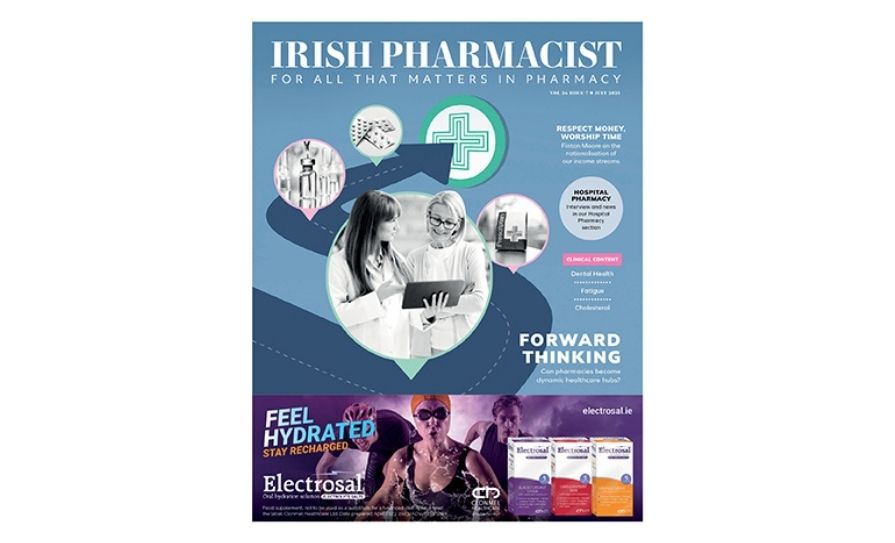Is there a resurgence in the use of what is foolishly considered by some to be a benign ‘party drug’, asks Dr Des Corrigan
Drugs experts and media commentators have recently claimed that cocaine use is now so widespread that every town and village in Ireland is awash with the white powder. How true these claims are is difficult to judge in the absence of up-to-date, objective data. In this article, I will look at what data we do have and review the health implications of the use of a drug that many users foolishly consider a benign ‘party drug’.
There is no doubt that the world production of cocaine has increased dramatically in recent years. The United Nations, in its 2019 World Drug Report, stated that overall cocaine production in the three producer countries (Bolivia, Columbia and Peru) had doubled since 2013 to 1,976 tons. While seizures had also increased to 1,275 tons, that still leaves a lot of the drug available on the illicit market in the US and in Europe. Supply has definitely increased, therefore. Less up-to-date are our national figures on consumption and cocaine-related harms. The most recently published Population Survey dates to 2014/15 and shows that 8 per cent of adults had ever used the drug, but that only 0.5 per cent were current users, having used it in the previous month. This latter figure compares to 65 per cent who reported use of alcohol and 4 per cent who had used cannabis in the past month.
In terms of harm, the most serious is death, and cocaine-related poisoning fatalities have increased by 26 per cent to 53 in 2017 (the last year for which data is available). The number of deaths has ebbed and flowed in parallel with our national financial fortunes, giving support to the old joke that cocaine was God’s way of telling you that you had too much money. What I mean is that cocaine deaths first peaked in 2008 at the height of the infamous Celtic Tiger era, only to fall back dramatically once the Great Recession kicked-in and many people no longer had the money to indulge themselves with ‘nose candy’. With the ending of the financial crisis, such deaths are unfortunately back at Tiger era levels. Demand for treatment for problem cocaine use has also increased, from 8 per cent of all drug treatment cases in 2012, to 22 per cent in 2018. One of the truly worrying trends is that the smokeable form of cocaine, known as ‘crack’ or ‘free base’, accounted for 11 per cent of overall cocaine cases.
I regularly do some peer education training on behalf of a drug project in the Tallaght area with groups of young women who use crack and as a result, I have come to realise how prevalent the use of this most harmful form of the drug is in poorer and marginalised communities. What makes crack cocaine so dangerous is the fact that as the alkaloid free base, it is volatilised at relatively low temperatures in a crack pipe, allowing it to be smoked without burning it into carbonised soot. This has an immediate impact on the onset and duration of action of the drug. Whereas cocaine salts in powder form have typically an onset of action of one-to-five minutes, crack and injected cocaine produce their euphoric effects after just five seconds. On the other hand, the duration of the rewarding pleasurable effects are shorter with crack, lasting about 15 minutes for one rock or stone. Powder, on the other hand, produces a high that can last up to 90 minutes. Because of the more rapid onset of dysphoric reactions after crack, repeated use becomes rapidly established in order to avoid negative feelings, leading to compulsive, addictive patterns of use.
While addiction can develop to any form of cocaine, it occurs more rapidly with crack than with the powder. Because the dependence is psychological rather than physical, it can be more difficult to treat and medication-based therapies are largely ineffective. Counselling and cognitive behavioural therapy (CBT) seem to offer the best hope of recovery for both crack and powder addicts. Although the dependence is psychological, there are definite withdrawal symptoms, including intense craving for the drug, depression and suicidal thoughts. It is not surprising therefore that cocaine is one of the main drugs detected in those who died by hanging (114 in 2017). It is also possible that many non-poisoning deaths attributed to cardiac events (56) are also linked to cocaine use because it is well known that cocaine in whatever form has a significant impact on the cardiovascular system.
This arises from the increased energy and mental alertness that makes cocaine such an attractive drug. This creates a large increase for oxygen in the brain and the rest of the body. This is met by an increased heart rate, leading to tachycardia and at the same time, the drug acts as a vasoconstrictor, leading to hypertension and coronary artery spasm. This ‘Catch-22’ scenario results in heart attacks, strokes, cardiomyopathy and in some cases bowel and kidney ischaemia. The various cutting agents used by organised crime gangs to boost profits by bulking-up the powder can add to those risks. One such agent is lignocaine or lidocaine, the local anaesthetic effect of which mirrors that of cocaine and thus fools buyers into thinking they are getting high-purity drug, when in fact it might at best contain 20 per cent of pure cocaine.
Excessive exposure to lignocaine can exacerbate cardiovascular issues. Other cutting agents are also worrying. Phenacetin is another common diluent and nobody outside the cartels seems to know why it is used, since it is an analgesic banned for human use because of the kidney damage, including cancer of the kidney, it causes. The most common cutting agent at present is the anthelminthic levamisole that potentiates the effects of cocaine, possibly because its metabolite aminorex has amphetamine-stimulant effects. Unfortunately, in cocaine powder users, it also causes impairments in attention and working memory, as well as pronounced thickening of the lateral prefrontal cortex. It is also known to cause neutropaenia and agranulocytosis and skin necrosis that requires skin grafts.
Our previous experience of the Tiger era cocaine phenomenon taught us that it has a range of negative consequences arising from the direct effect of the drug on the body, but also indirectly from the way the cocaine is taken. For example, destruction of the nasal septum when the drug is snorted and the transmission of HIV and Hep C through ‘Crack Lip’, when the hot pipe causes open sores through which viruses from shared pipes gain entry to the body. If, as it appears, we are in the midst of another increase in cocaine use, it would appear that as a society, we are condemned to relive the mistakes of the past. Do we really have to endure more high-profile tragedies in so-called ‘celebs’ before we once again realise that cocaine consumption by the wealthy, the middle-class or the marginalised is not a good idea? Sometimes I despair of my fellow human beings who, when it comes to chemical intoxication, think that it could not happen to them. Well, it can and for some unfortunates, it probably will.







